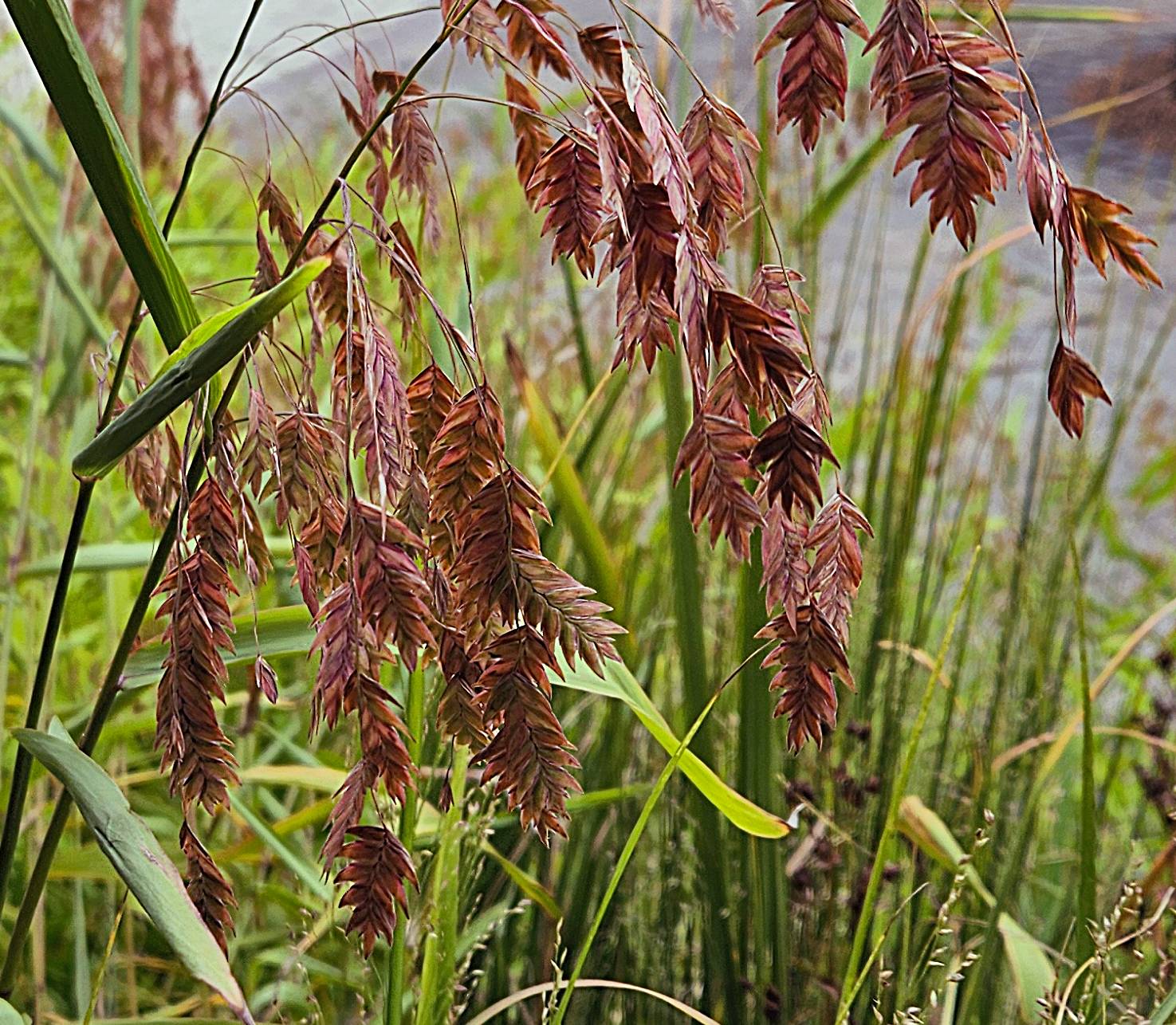Happy Mystery Monday! Can you guess what is pictured in photo #1?

The answer to last week’s mystery is Northern sea oats, Chasmanthium latifolium, pictured in photo #2.

Northern sea oats, Chasmanthium latifolium, also known as river oats, is a native grass found along streams and woodland edges in the eastern United States and northern Mexico. Growing in clumps 2–5′ tall, it spreads slowly by rhizomes and seed, thriving even in the shade of black walnut trees—something few other ornamental grasses can tolerate.
Its flat, oat-like seed heads dangle on slender stems, catching the light and fluttering with the slightest breeze. As the seasons change, the foliage shifts from green to copper with hints of purple in Fall, before fading to paper bag brown in Winter, when the sturdy stems continue to stand. The persistent seed heads not only add beauty to Winter landscapes and dried arrangements but also provide food for birds and small mammals.
Hardy to –30°F, deer-resistant, and ecologically valuable, northern sea oats serve as a larval host for the northern pearly-eye butterfly, Lethe anthedon, while offering year-round interest to both wildlife and gardens.
Mystery Monday is sponsored by the Spy Newspapers and Adkins Arboretum.



Mary Ann Brown says
Common wasp (Vespula vulgaris)